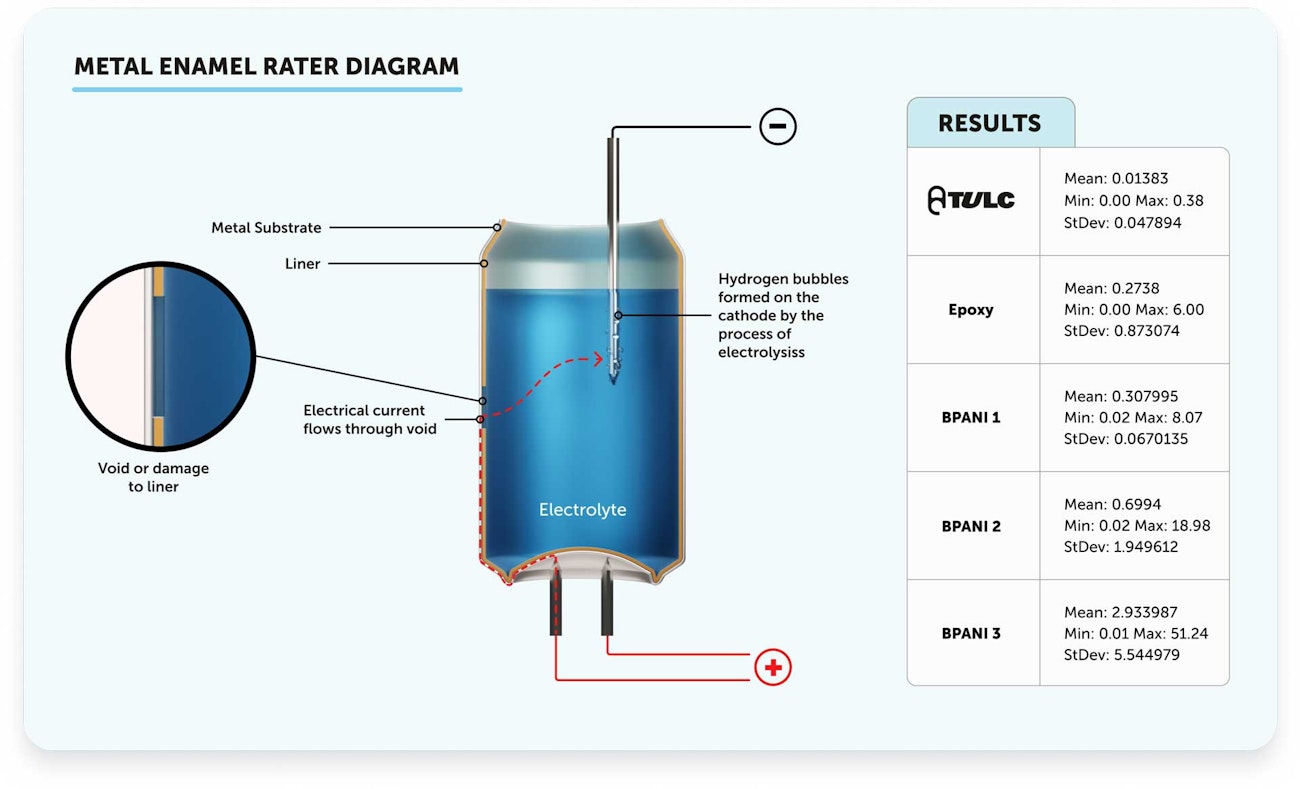SPONSORED CONTENT
Last month, Kate Bernot opened an article on can packaging for hard-to-hold drinks with the statement, “The first rule of can failure is you don’t talk about can failure.”
While this unwritten rule may ring true, it begs the question: Why? More to the point, why is it the responsibility of brands to discuss their failures rather than the responsibility of suppliers to be forthcoming about the realities of can packaging performance?
We all know it, we all feel it—the beverage industry is changing.
The variety of beverages on the market today is exponentially greater than it was a decade ago. While the variety is exciting, there are challenges involved in such rapid innovation.
Working with more than 6,500 brands nationwide, American Canning has noticed a concerning trend in the increase in the rate of can failures related to corroded aluminum. Much of this has been in “new” canned beverage categories such as ready-to-drink cocktails (RTDs), wine, and other emerging products.
Believing in both the undisputed benefits of aluminum can packaging and the quality of cans that are in the market, American Canning set out to better understand the reasons behind this trend. What they found, through a series of 12-month accelerated aging tests, is that while BPANI and epoxy cans are great for a vast majority of beverages, they were primarily designed to hold soft drinks and beer. The innumerable new combinations of ingredients currently being presented in beverage innovation are simply stretching the threshold liner applications beyond what they were designed to hold.
What is the desired outcome of can packaging?
An overwhelming number of beverage producers state that an ideal shelf-life should be at least one year. This means the product stays in the can, tastes like it should, and doesn’t need special treatment during distribution for at least 12 months from the date of filling.
Understanding the Anatomy of a Can
These factors play a role in best understanding the somewhat technical issues related to can packaging:
- The wall of an aluminum beverage can is thinner than a human hair.
- All cans include a liner that acts as a barrier between the raw aluminum wall and its contents.
- Most liners are sprayed-on during the can manufacturing process.
- Beverage companies are both putting ingredients in cans that have never been canned before and dosing proven ingredients at levels never seen before.
Hypothesis
Certain types of liquid or ingredients more easily penetrate can liners. Contact between the contents and bare aluminum results in corrosion, which in turn causes pinhole leaks on the can body. These leaks can occur in just days or weeks.
A Research-Driven Approach to Understanding Packaging Performance as it Relates to Can Liners
American Canning pursued a four-pronged research approach:
- Enamel Rater Testing: An enamel rater is a piece of equipment commonly used in manufacturing to test the strength or integrity of a coating applied to a metal surface—in this case, the inside of a beverage can.
- Twelve-month Accelerated Aging: conducting comparative testing for six different beverage types at an independent, third-party lab. Each beverage type was packaged in three different can liners across multiple can manufacturers. The three liner applications were aTULC, BPANI, and epoxy. All cans were randomly selected from existing inventory to ensure unbiased results. The filled cans were incubated at an elevated temperature to simulate 12 months of ambient temperature storage. Upon completion, cans were opened and examined for physical damage; the liquid contents were evaluated for dissolved aluminum content to quantify how much each beverage was able to scour through the can liners and begin eating through the aluminum.
- Observation: review of quality-control cases involving corrosion. This is a review of real-world brand experiences, collecting hypotheses and anecdotes within the market to establish examples to confirm and/or contradict the objective data-driven analytics.
- Data Collection and Corroboration: discussions and review of research projects performed by can makers, customers, independent laboratories, and universities, including Dr. Gavin Sacks at Cornell University regarding his work on wine in cans.

The Data
A note on methodology: Recognizing there is much discussion surrounding the efficacy of liners based on manufacturer or time in the marketplace, American Canning selected the “best” current examples of commercially available cans from multiple, reputable domestic can manufacturers. This included testing for both BPANI Gen 2 (BPANI epoxy) and traditional BPA-epoxy cans; all with the thickest application of liner weight typically applied to beverage cans. BPANI Gen-1 (acrylic-based coating) was not included, as prior research indicated there were significant performance concerns; the majority if not all domestic cans have transitioned to Gen 2 coatings.

RTD with salt, 12-month accelerated aging
Results
Despite much discussion within the industry on package compatibility, there is no definitive answer on what a can is capable of holding, much less any publishable guidelines for use during beverage formulation or can selection.
The following factors seem to have meaningful impact on whether a can will properly contain a particular beverage:
- Proper application of the internal coating (thickness, uniformity): This is noted as the most critical factor and can be highly variable, even within a single pallet of cans.
- The formulation/material of the internal coating (acrylic, BPA-epoxy, BPANI epoxy, polyester-resin, etc): This is a critical consideration for some categories as compatibility varies depending on the properties of the beverage.
- Properties of the beverage: Properties such as pH/titratable acidity, alcohol content, chloride levels, etc., will have a substantial impact on shelf life in a BPANI or epoxy-lined can.
- Storage conditions: The environment in which filled cans are stored is crucial (temperature, physical protection, etc). The warmer the cans are stored, the faster corrosion typically happens. In addition, any damage to a can causing contact with the external surface of other nearby cans may lead to secondary (outside-in) corrosion. Secondary corrosion compounds much faster due to the absence of an exterior liner (on BPANI and epoxy cans).
- Liner availability: Despite brand preferences or potential demand, cans using traditional BPA-epoxy are getting harder to source the United States creating a risk for products requiring liner type.
Where to go from here?
The long-term solution is to continue to perform research, testing, and analysis on beverages, ingredients, and other packaging variables to better understand how to maximize product/package compatibility.
In the future, this may require the development of new and improved coatings or equipment to meet the needs of the changing beverage market. However, development takes time and can be a costly, winding endeavor. So, what are our options now?
- Cease innovating and stick to what works (but where’s the fun in that?).
- Stick to current packaging, with an increase in cost due to loss (but costs are already rising enough ...).
- Trial and error to find the perfect balance between can and beverage properties (inconsistent results at best).
- Use a can designed for hard-to-hold products (aTULC).
aTULC: A New, Third Liner Option
For more than 20 years, Toyo Seikan Group Holdings Ltd has been manufacturing an aluminum beverage can called aTULC, aluminum Toyo Ultimate Can. Having won “Can of the Year” for wine in 2019—it more than doubled the shelf-life of Dark Horse wines—it appears that not all cans are created equal. While the can itself is proven, and not new, it is new to the United States. The first domestic aTULC plant didn’t open until late December 2022, with full production only occurring in spring 2023.
Unlike traditional BPANI-epoxy and BPA-epoxy cans, aTULC cans are made from pre-coated aluminum sheet with a polyester resin-based liner; the production process is BPA-free.
So, what does the introduction of this liner technology mean for hard-hold craft categories?
Embedded content: https://www.youtube.com/watch?v=O9Dqx-Rl60I
The Benefits of aTULC
- Using pre-coated aluminum sheet, the coating process for aTULC is more consistent than sprayed-on BPANI and epoxy options—thicker, more uniform, and with fewer defects. This equates to lower risks for can corrosion.
- Using a polyester-resin–based material, aTULC’s liner material is better able to withstand the unique demands of certain beverage ingredients and properties—particularly highly acidic ingredients and salt contents.
- aTULC production processes allow both the aluminum can sheet and finished cans to be inspected with automated equipment to catch any liner defects and verify the performance of the liner on 100 percent of the cans produced.
- Pre-coating acts as a lubricant, so no water or harsh chemicals are required during the forming process. This creates a completely waterless manufacturing line; one of (if the not the) most eco-friendly can-making process in the world.
The Results
- Less variability in liner consistency. Less risk in potential can corrosion.
- Significantly less evidence of physical corrosion on 12-month aged cans.
- Less dissolved aluminum contained within the contents of the cans.
Accelerated aging demonstrates that aTULC cans perform remarkably better than traditional BPANI and epoxy cans in hold-to-hold categories [spirits-based cocktails, cider, and wine]. This translates to longer shelf life, which leads to fewer recalls, decreased expired product buybacks, and a larger possible distribution footprint.
While more information is needed to fully evaluate all can times and ideal packaging scenarios, it is clear
To find out which cans are the best fit for your product, get in touch with American Canning at…
[email protected]
Americancanning.com
(512) 931-1226
SPONSORED CONTENT

